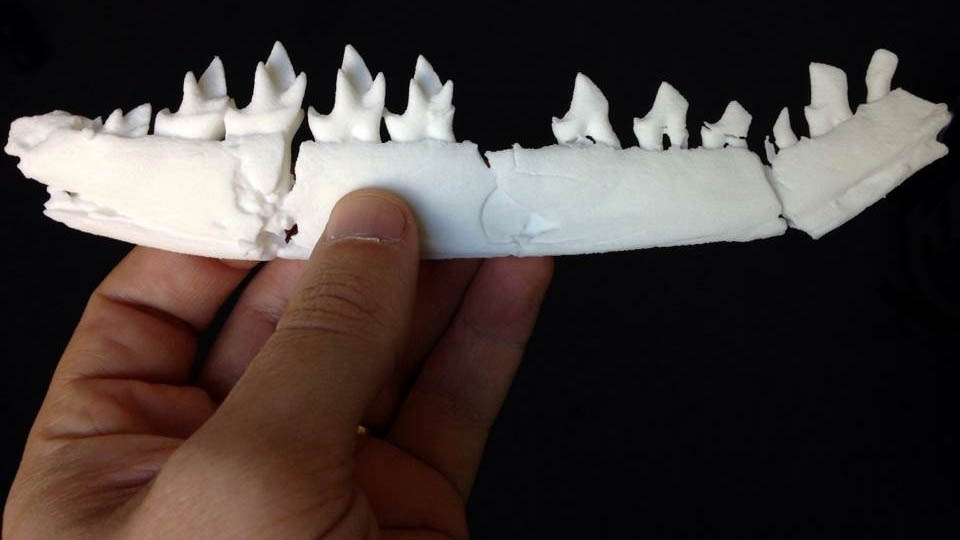The 3D printing revolution is helping us do science
3D printed fossils help scientists discover the origins of teeth in mammals

It turns out that 3D printing isn't just for pizza, as scientists have used the technology to study 170m year old fossils that are embedded into rocks on the Isle of Skye.
In a blog post on iMaterialise, the company explains how Dr Roger Close and his colleagues from Oxford University discovered the fossilised jaw of Palaeoxonodon ooliticus - a creature about the size of a mouse.
It is thought that dinosaurs in the Palaeoxonodon family can help explain molar teeth in modern mammals - and thanks to 3D printing, this niché corner of science could be about to be turned on its head. It turns out that 3D printing has revealed that specimens thought to have come from three separate species are actually from the same animal.
Rather than go to the huge expense of removing the tiny jaw fossil they found from the rock, they instead used a X-Ray Computed Tomography (CT) scanner from the Natural History Museum to build a virtual model of the jaw which could then be printed (hence why a 3D printing company is blogging about it).
Blowing things out of proportion.
The prints, which were made with polyamide, had a number of other advantages over having to lug a massive rock around, such as the fact that the 3D file could be shared with other researchers around the world with ease - and perhaps most interestingly, scaled up in size.
Given the real life jaw was less than the size of a 20p coin, the scientists were able to blow it up to 20x as large - to make studying easier.
Close is quoted as saying about the print: "The best thing about having a 3D print of the fossil was that I could show the specimen off to colleagues and friends - virtually everyone who saw it was amazed, particularly when they heard that the model had only cost £10!"
Sign up for breaking news, reviews, opinion, top tech deals, and more.
It's a great example of how 3D printing technology is changing science.